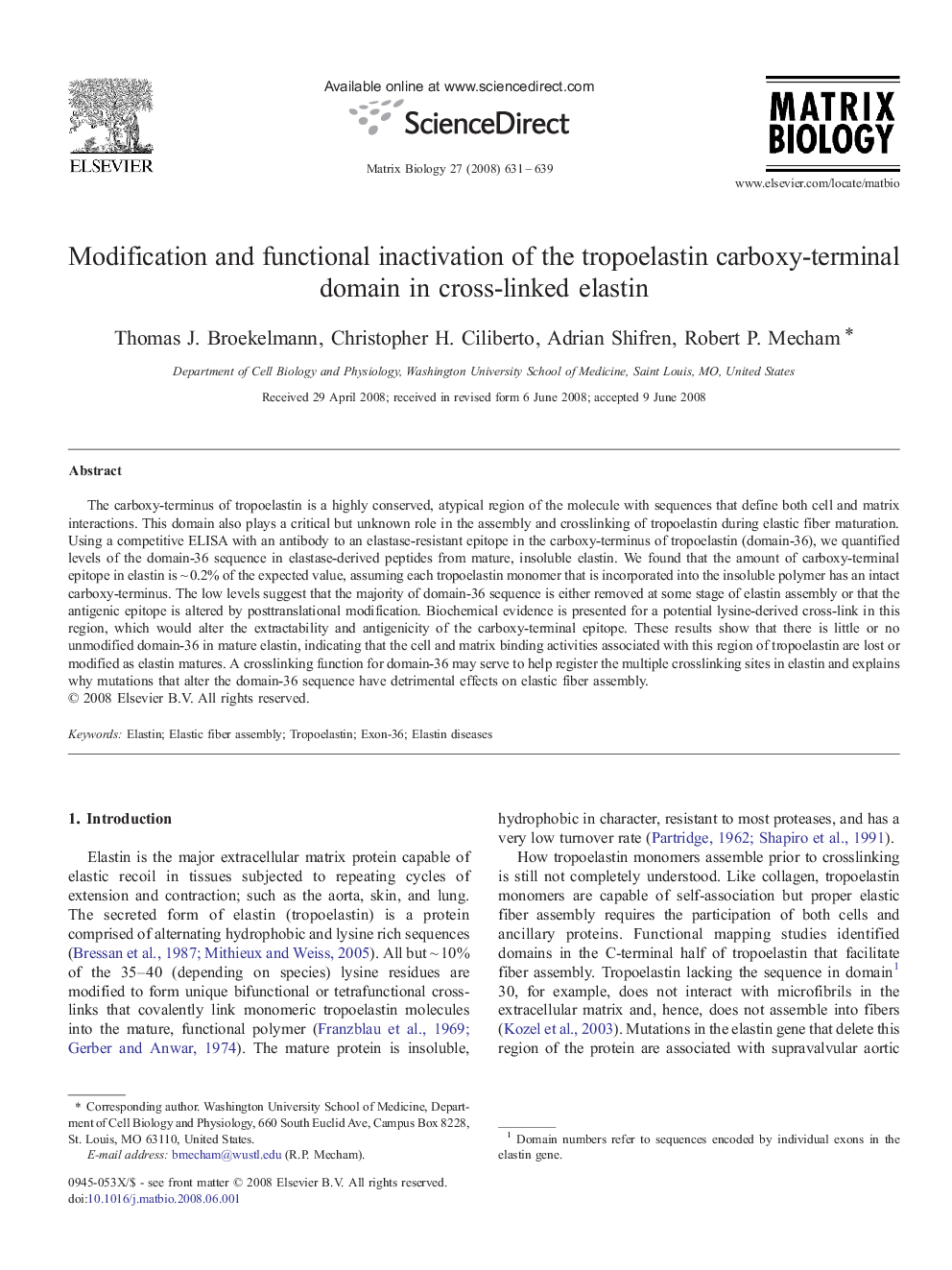| Article ID | Journal | Published Year | Pages | File Type |
|---|---|---|---|---|
| 2145312 | Matrix Biology | 2008 | 9 Pages |
Abstract
The carboxy-terminus of tropoelastin is a highly conserved, atypical region of the molecule with sequences that define both cell and matrix interactions. This domain also plays a critical but unknown role in the assembly and crosslinking of tropoelastin during elastic fiber maturation. Using a competitive ELISA with an antibody to an elastase-resistant epitope in the carboxy-terminus of tropoelastin (domain-36), we quantified levels of the domain-36 sequence in elastase-derived peptides from mature, insoluble elastin. We found that the amount of carboxy-terminal epitope in elastin is ~Â 0.2% of the expected value, assuming each tropoelastin monomer that is incorporated into the insoluble polymer has an intact carboxy-terminus. The low levels suggest that the majority of domain-36 sequence is either removed at some stage of elastin assembly or that the antigenic epitope is altered by posttranslational modification. Biochemical evidence is presented for a potential lysine-derived cross-link in this region, which would alter the extractability and antigenicity of the carboxy-terminal epitope. These results show that there is little or no unmodified domain-36 in mature elastin, indicating that the cell and matrix binding activities associated with this region of tropoelastin are lost or modified as elastin matures. A crosslinking function for domain-36 may serve to help register the multiple crosslinking sites in elastin and explains why mutations that alter the domain-36 sequence have detrimental effects on elastic fiber assembly.
Keywords
Related Topics
Life Sciences
Biochemistry, Genetics and Molecular Biology
Cancer Research
Authors
Thomas J. Broekelmann, Christopher H. Ciliberto, Adrian Shifren, Robert P. Mecham,
